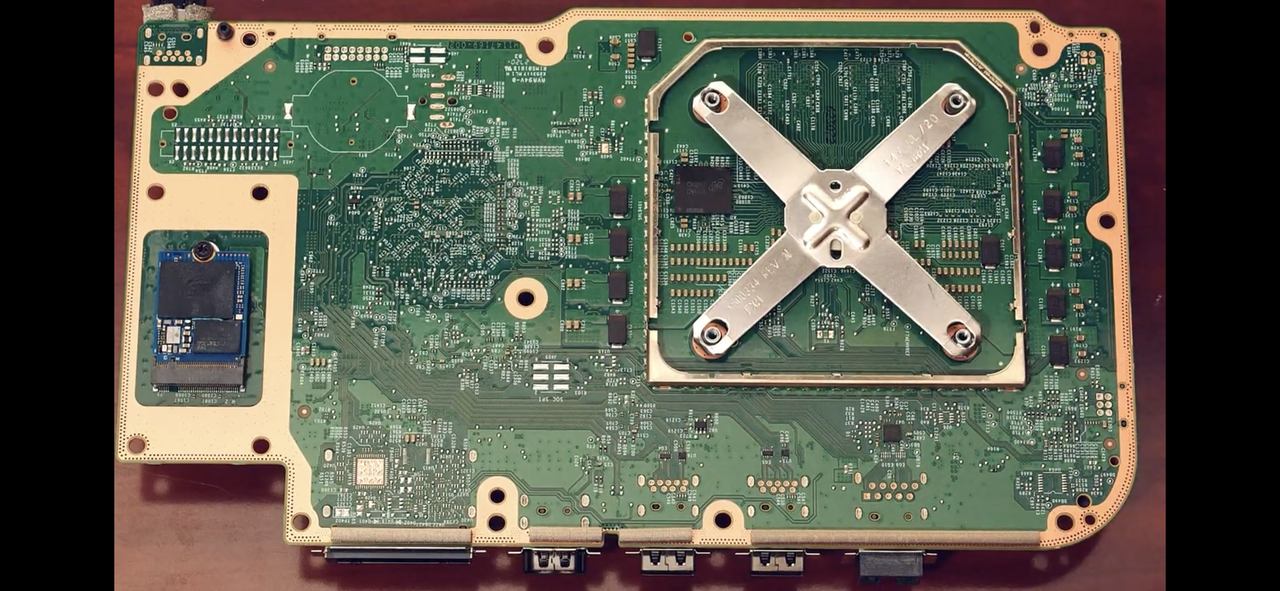Nice choice. Shows how good their optimizations in software are with games like Valhalla hitting 5-10 second load times on the system, which aren't that far off from games like Miles Morales on cold boot (7 seconds).
At first I worried PCIe 3.0 meant 8b/10b encoding but apparently they made the switch to 128b/130b encoding before PCIe 4.0. So in performant terms when it comes to most things regarding overhead, the two are virtually identical. 3.0's limit is that each lane is rated for 1 GB/s rather than 2 GB/s.
So facilitating the internal drive and external expansion card the Series systems should have a controller with 4x 4.0 links, at the very least.
Last gen games in BC mode. You've seen native PS5's games bonkers insane load times, right? And those are loading up to twice as much RAM as the 8th gen, yet load faster than 8th gen titles. Kinda obvious what's happening.
The PS5's BC mode seems likely to be nerfing its SSD to ensure compatibility, where we've long observed Microsoft's API is more portable.
This is not what's happening with BC games. BC games on both systems are barely leveraging the full SSD I/O stack on either. The reason Series X BC games are loading faster on average is because a lot of that is CPU-bound, and it can disable SMT mode to clock the CPU even faster, so most games benefit from that. There's no "nerfing" going on with either; it's not like the SSDs start at full power and scale down, don't assume variable frequency settings suddenly apply to how SSDs operate.
One of the things I've seen a few folks trying to say is that PS5 is disabling half its GPU to run BC games and that is a reason the load times are slower. This is not true, because the PS5 only disables half of the CUs for native PS4 BC, as that system had 18 CUs and 32 ROPs. The PS4 had 36 CUs and 64 ROPs, so in terms of physical operation the PS5's full GPU is enabled on those games when it comes to BC. Some have tried saying the GPU is stressed when running these games and so variable frequency kicks in meaning less CPU power meaning less CPU muscle to help with load times. Again, this is false; these are games designed for a 4.2 TF GCN-based GPU architecture, they aren't going to be stressing the PS5 anywhere near a capacity to require the GPU to take power budget from the CPU.
When it comes to next-gen games we already have some results and the solutions seem like they might perform closer than first thought. Miles Morales has a 7-second cold boot on PS5, while AC Valhalla has a 10-second cold boot on Series X (Tom Philips said 5, but he might be cutting out logo transitions or whatever the same way some do with Miles Morales to state the 4-second cold boot number). Yes they're two different games, but they're both open-world and at least relatively visually intensive.
The truth is even with next-gen games, after the decompression blocks do their work the CPU still has to process and sort out the data once it's in RAM, it's not exactly a "free lunch" in that aspect.
The actual SSD itself isn't. That's the problem.
How is it a problem? PCIe 3.0 supports same 128b/130b encoding scheme as PCIe 4.0. PCIe 4.0's main advantages are slightly less power draw and double the bandwidth support per TX/RX lane. Also keep in mind 3.0 also has an updated 3.1, but you wouldn't see drive or controller manufacturers labeling their products with a stepping update.
You guys are acting like this is some PCIe 2.0, or even SCSI style interconnect. Melodramatic simply because there's a 3.0 at the end rather than a 4.0.
Maybe this explains using only 2x PCIe 4.0 lanes instead of full 4x lanes? As 2x lanes max out at 3.5GB/s = 4x PCIe 3.0 lanes?
Two lanes max out at 3.938 GB/s, not 3.5 GB/s. Overhead for PCIe 3.0 on four lanes is nowhere near 500 MB since they use 128b/130b encoding scheme, same as PCIe 4.0.







